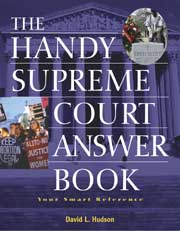President of the Day
Who opened the New York World fair with one of the first televised speeches?
- The event was covered by NBC.
- He kicked off an event titled "The World of Tomorrow."
- He gave one of the first televised presidential addresses.
- He began regularly scheduled television.
 Franklin D. Roosevelt
Franklin D. Roosevelt
The television, which may seem to many to be a decidedly American invention, was actually the outcome of a series of inventions by a cast of international characters. As early as 1872 British engineer Willoughby Smith (1828-1891), inspired by an experiment on selenium rods, imagined a system of "visual telegraphy." Five years later, the tube technology that would make television possible was developed in Strasbourg by German physicist Karl Ferdinand Braun (1850-1918). He invented a cathode-ray tube (also known as the Braun tube), which improved the Marconi wireless (radio) technology by increasing the energy of sending stations, and arranged antennas to control the direction of radiation.
In 1907 Russian physicist Boris Rosing proposed using Braun's tube to receive images--something he called "electric vision." One year later, Alan Campbell Swinton (1863-1930) suggested using the cathode-ray tube to both receive and transmit images. That same year, the idea of using cathode-ray tubes to scan images for the purpose of television was published, and by 1912 it was being worked on by Rosing and his former pupil, Vladimir Zworykin (1889-1982), in Russia.
In 1923 a competing technology, which was entirely mechanical, reached an early milestone when British inventor John Logie Baird (1888-1946) demonstrated an electrified hatbox with disks, which constituted the world's first working television set. But the race was still on and in that same year, Zworykin, who had moved to the United States in 1919 and was hired by Westinghouse Electronic Corporation (in 1920), advanced the tube-based technology when he patented the iconoscope, which would become the television camera. In 1929 Zworykin, now a U.S. citizen, invented the kinescope (television tube). Zworykin's inventions together comprised the first all-electronic television.
Regularly scheduled U.S. television began on April 30, 1939, when President Franklin D. Roosevelt (1882-1945) opened the New York World's Fair, billed as "The World of Tomorrow,"giving a speech that was the first televised presidential talk. The National Broadcasting Company's (NBC) coverage of the fair's opening initiated its weekly television scheduling, a victory for parent company RCA, whose president, David Sarnoff (1891-1971), founded NBC and is considered a broadcasting pioneer.
From The Handy History Answer Book by Rebecca Ferguson, (c) 2005 Visible Ink Press(R) More than a thousand questions explore a cast of thousands, including Socrates, an early advocate of the question-and-answer format.
| < Previous Fact | Next Fact > |
Dig deeper with these related titles:
 |
The Handy Presidents Answer Book Second Edition A complete look at every Presidents' who, what, when, where, why, and, how . . . Offering an engaging overview of the U.S.... Read More » |
ISBN: 9781578593170 $54.95 |
 |
The Handy History Answer Book, 2nd Edition All things must pass. In an understatement of historic proportions, quite a few things have passed since the end of the last millennium, when The... Read More » |
ISBN: 9781578591701 $21.95 |
 |
The Handy Supreme Court Answer Book What's arguably the Supreme Court's most controversial decision? Which Justices signed the Declaration of Independence? How much do you really know... Read More » |
ISBN: 9781578591961 $39.95 |
 |
The Handy Politics Answer Book In these politically charged times, interest in the political process is peaking. From the national election debacle in Florida to 9/11 to... Read More » |
ISBN: 9781578591398 $21.95 |





